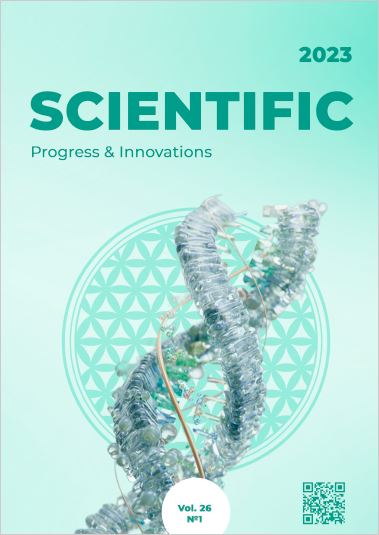Analysis of mycoflora of seeds of hybrids and varieties of sunflower
DOI:
https://doi.org/10.31210/spi2023.26.01.02Keywords:
sunflower, sowing qualities, micromycetes, phytosanitary condition of seeds, contaminationAbstract
Sunflower is one of the most important oil crops in the world. Realization of its genetic potential is associated
with disease damage to plants. A significant species composition of pathogenic microorganisms found on sunflower
poses a threat to the quality of seed material. Losses caused by seed-borne diseases are an expression of the degree
of seed contamination, the virulence of the pathogen, and the sensitivity of plants. The infection prevents the
formation of the planned plant stand density, negatively affects their condition in the following phases of
development. Seedlings from affected seeds are not aligned, plants are depressed with reduced productivity. In the
course of the research, an analysis of the diseases of sunflower seeds of two hybrids (Nk Brio, Ukrainian sunflower)
and the Lux variety of the 2021 and 2022 harvests was carried out in the fields of agricultural enterprises of the
Poltava region. According to the results of the macroscopic analysis of the sunflower seed material of the 2021
harvest, a high percentage of the presence of sclerotia of the causative agent of white rot (1.17 %) was found in the
Lux variety; in the hybrid Ukrainian sunflower, the sclerotia of Whetzelinia sclerotiorum is 0.12 % less; the hybrid
Nk Brio is free from this type of infection. W. sclerotiorum and Botrytis cinerea were present in the seeds of the
2022 harvest. Thus, Lux variety had contamination level of 1.68 %, the hybrids Nk Brio had 0.28 % and Ukrainian
sunflower had contamination level of 0.91 %. This fact is related to climatic conditions. High indicators of the
sowing qualities of the seeds of all the tested varietal material of the 2021 and 2022 harvests were noted. The best
level of growth strength and laboratory germination were shown by the hybrids, especially the Nk Brio hybrid with
laboratory germination of 96 %, and germination energy of 92‒94 %. The highest percentage of see infection was
found in the conditions of 2022. Thus, the Lux variety had 38 % of seed infection, while the Ukrainian synflower
hybrid had 29 % and Nk Brio had 21 % respectively. Phytoexpertise of sunflower seeds allowed to establish its
contamination by a complex of micromycetes (Botrytis Micheli, Alternaria Nees, Fusarium Link., Cladosporium
Link., Penicillium Link., Aspergillus Micheli et Fr., and Trichothecium Link.), some of which are active producers
of phytotoxins. A slight difference (within 1 %) was established between external sporulation of the fruit membrane
and infection of the core.

 Creative Commons Attribution 4.0 International Licens
Creative Commons Attribution 4.0 International Licens